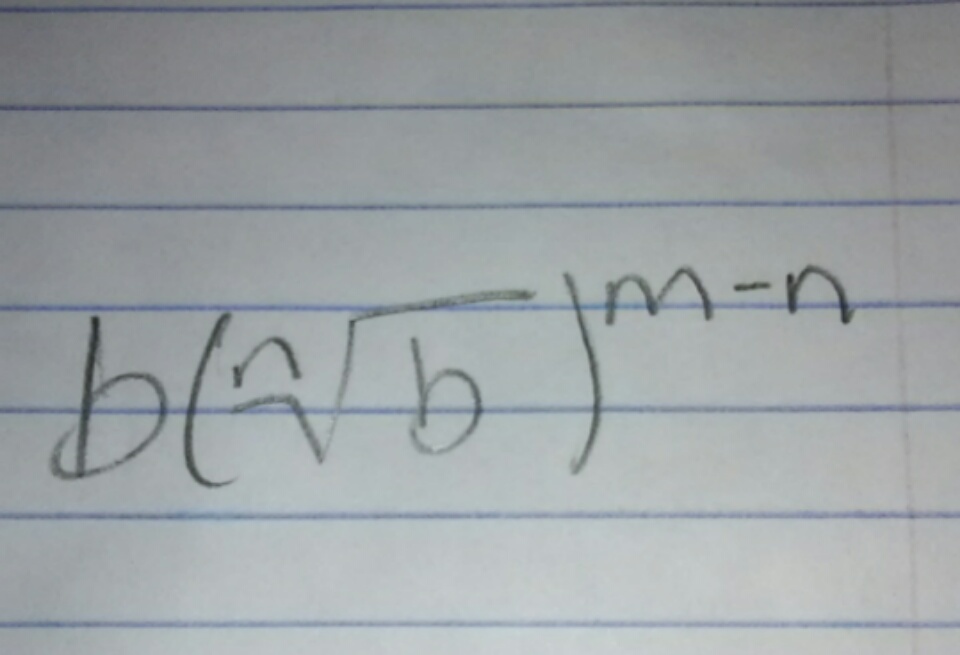Easier Formula for Rational Exponents?
During my Math II class today, I was looking at yesterdays homework for Rational Exponents and how to simplify them, 16 to the 5/2 power, etc. I was looking through it and got curious and began to simplify a problem, 8 to the 5/3 power, 32 of course, however while I was doing it I got curious and started working backwards, through this I reached a simpler version of the problem being 8([3rd root of 8] to the 5-3 power) [Looks simpler on paper]. I then reverted this to the base formula from b to the m/n power to be b([nth root of b] to the m-n power). In this form you can plug in any base combined with the index and the base's m and turn it into a problem which only needs to be simplified. I am curious if anyone has thought of this yet and if so, where does it originate. I did this with various numbers -1, 1, 2, 3 (simple ones) and saw that it worked with all of them. Let me know if anyone has seen this before please!

Easy Math Editor
This discussion board is a place to discuss our Daily Challenges and the math and science related to those challenges. Explanations are more than just a solution — they should explain the steps and thinking strategies that you used to obtain the solution. Comments should further the discussion of math and science.
When posting on Brilliant:
*italics*or_italics_**bold**or__bold__paragraph 1
paragraph 2
[example link](https://brilliant.org)> This is a quote# I indented these lines # 4 spaces, and now they show # up as a code block. print "hello world"\(...\)or\[...\]to ensure proper formatting.2 \times 32^{34}a_{i-1}\frac{2}{3}\sqrt{2}\sum_{i=1}^3\sin \theta\boxed{123}Comments
There are no comments in this discussion.